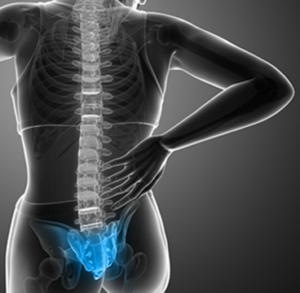

Orthopedic Surgeons and Physical Therapists Located in San Antonio and South Texas
Laminectomy Q & A
What is the Lumbar Spine?
Your lumbar spine, consisting of five vertebrae in the lower back, plays a crucial role in supporting the weight of your upper body. The large size of these vertebrae makes them susceptible to various issues, impacting the function of your overall spine. Discs between the vertebrae act as cushions and shock absorbers.
What are the Most Common Problems in the Lumbar Spine?
The lumbar spine is prone to several problems, including:
- Degenerative disc disease
- Stenosis
- Ruptured or herniated discs
- Arthritis of the joints
- Spondylolisthesis
- Acute injury
When components like vertebrae, discs, nerves, or supporting soft tissue break down, it can lead to pressure on nearby nerves, causing significant pain.
What is a Laminectomy?
A laminectomy aims to relieve nerve pressure by removing a part of the lamina, the arched portion forming the spinal canal’s roof. This procedure allows doctors at South Texas Spinal Clinic to visualize the area and identify the source of nerve compression, typically a herniated disc, bone spur, disc fragment, or, rarely, a tumor. The removal of the problematic element provides space for the nerve to heal.
What is the Recovery Time After a Laminectomy?
While South Texas Spinal Clinic prioritizes minimally invasive options, recovery time varies for each patient. Generally, patients may need to limit movements, such as lifting or twisting, for about six weeks. However, mobility, including walking, can be maintained after the procedure. If low back pain significantly affects your life, consider consulting South Texas Spinal Clinic to explore whether a laminectomy could be a beneficial option. You can also use the online scheduling tool to book an appointment.
Common Back and Spine Conditions
- Herniated Disc
- Disc Degeneration
- Degenerative Spondylolisthesis
- Spinal Stenosis
- Muscle Injury
- Spinal Injury
- Spinal Stiffness
- Arthritis
- Compression Fracture (Osteoporosis)
Laminectomy surgery is a common spinal procedure aimed at relieving pressure on the spinal cord or nerves, often caused by conditions such as spinal stenosis, herniated discs, or tumors. During a laminectomy, a surgeon removes part or all of the lamina, a section of the vertebra that covers the spinal canal. This creates more space within the spinal canal, reducing compression on the nerves and alleviating symptoms such as pain, numbness, and weakness.
Laminectomy is typically performed on the lower back (lumbar spine) but can also be done on the cervical or thoracic spine. The surgery is usually recommended when conservative treatments like medication and physical therapy have not provided sufficient relief. Advances in surgical techniques have made laminectomy less invasive, with many patients experiencing significant pain relief and improved mobility after recovery, allowing them to return to their normal activities.
Lumbar laminectomy surgery is a specialized procedure focused on relieving pressure in the lower back, or lumbar region, of the spine. This surgery is often recommended for patients suffering from spinal stenosis, herniated discs, or other conditions that cause nerve compression in the lumbar spine, leading to symptoms such as lower back pain, sciatica, and leg weakness.
During the procedure, a surgeon removes part or all of the lamina, the bony arch that forms the back of the spinal canal, to create more space for the spinal cord and nerve roots. This decompression helps to alleviate pain, numbness, and other symptoms by reducing pressure on the affected nerves. Lumbar laminectomy is typically considered when conservative treatments like physical therapy, medications, or injections have not provided sufficient relief. Advances in minimally invasive techniques have improved recovery times and outcomes, allowing patients to return to their daily activities with reduced pain and improved mobility.





